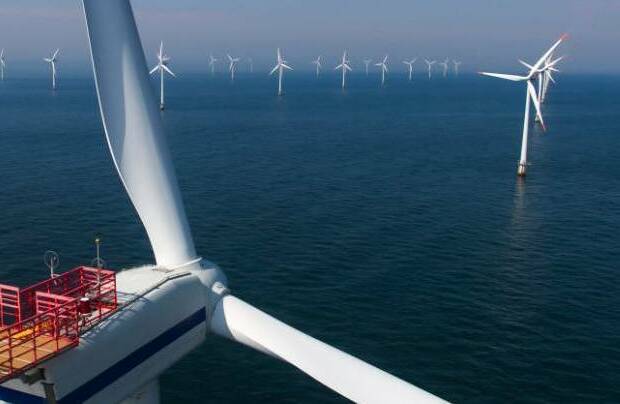The owner of Eraring Power Station, Origin Energy, has partnered with Spanish company BlueFloat to apply for a Hunter offshore wind zone feasibility licence.
The partnership is one of several that have expressed interest in operating the declared 1800 square kilometre zone that extends from Port Stephens to Catherine Hill Bay.
The three month feasibility licence application period closes on Tuesday.
The federal government is expected to announce the successful applicants early next year.
The licences give project proponents exclusive rights over a part of the zone for seven years, which is critical for attracting investment.

Origin earlier this year partnered with renewable energy RES to develop an offshore wind project in Gippsland.
"Origin undertakes a careful and thorough assessment of any potential partners for our business, including their commercial, technical and resource capabilities, and ensuring a high level alignment of purpose and values," An Origin spokesman said.
BlueFloat has standout development and technical capabilities in the emerging floating wind market, which we believe complements Origin's scale, expertise in the Australian energy market and deep experience in stakeholder engagement across the delivery of large, complex energy infrastructure projects."
Net Zero Australia, a collaboration between Melbourne, Queensland and Princeton universities and international management consultancy Nous Group, published a study in July which predicted offshore wind would be an important energy source in the nation's transition to zero emissions by 2050.
But the study found none of its six modelled scenarios "chose" NSW as an offshore wind location because of the "high cost of floating platform technologies and moderate winds".
The Hunter's wind turbines will float in deep water, unlike off Gippsland, where turbines will be planted in the sea bed closer to shore.
"Offshore wind faces the highest barriers due to the need for large subsidies and long lead times to develop initial projects, establish supply chains and provide grid access," the study said.

Despite the technical challenges, the Hunter also offers significant advantages.
These include its proximity to significant load centres and a highly skilled workforce.
The five gigawatt zone would also play a key role in assisting Hunter industry to transition to clean energy.
Meanwhile, a third protest against the government's offshore wind plans is due to take this Saturday at Hawks Nest Community Hall.
The protest aims to draw attention to the potential environmental impacts of offshore wind on the Hunter coast.
"The NSW Government has spent millions conserving and protecting the rare Gould's Petrels habitat and other sea birds along our coastline," a spokesman said.
"Now the Australian Government has decided from a desk in Canberra, with minimal consultation and place making, to construct around 300 offshore wind turbines that could potentially decimate the native bird population by up to 30 per cent based on studies of similar hasty efforts overseas."










